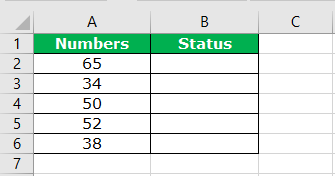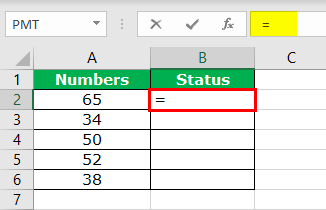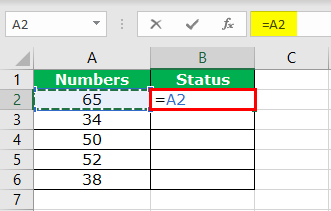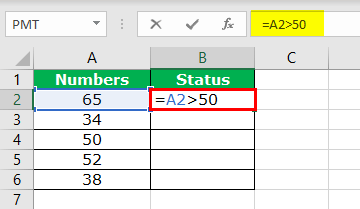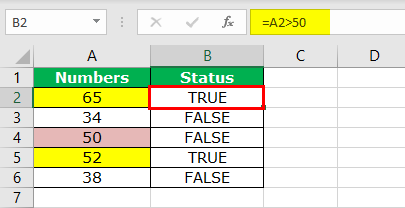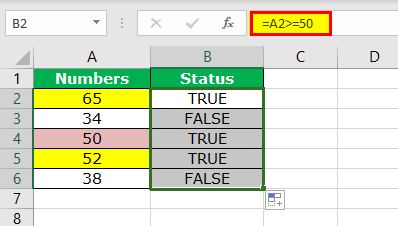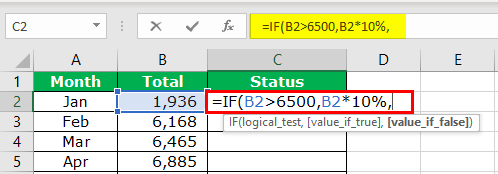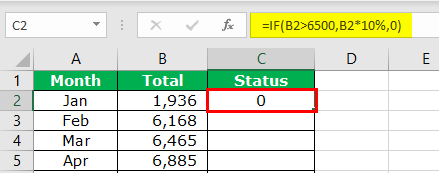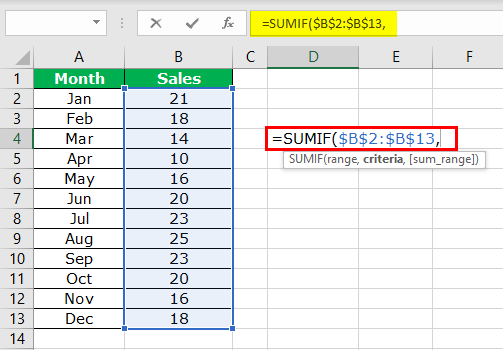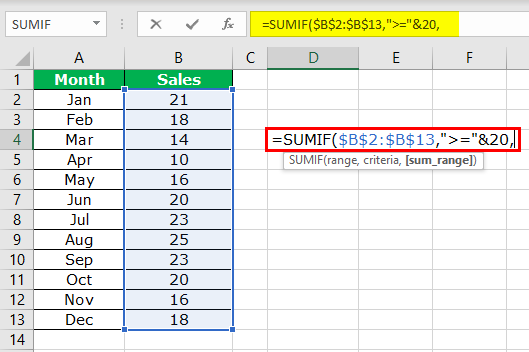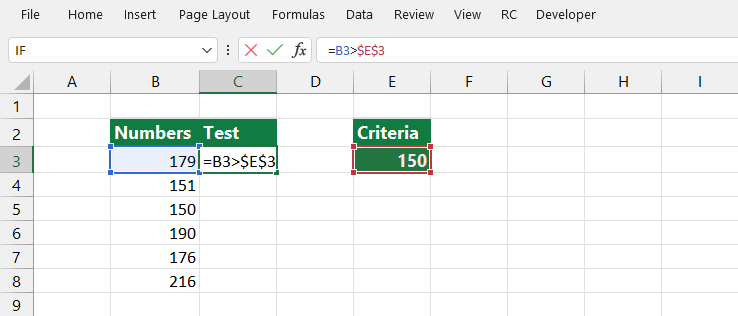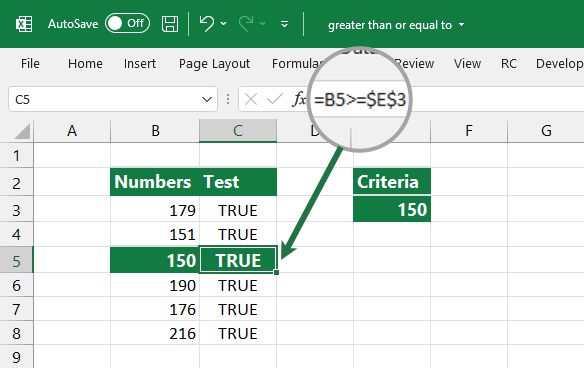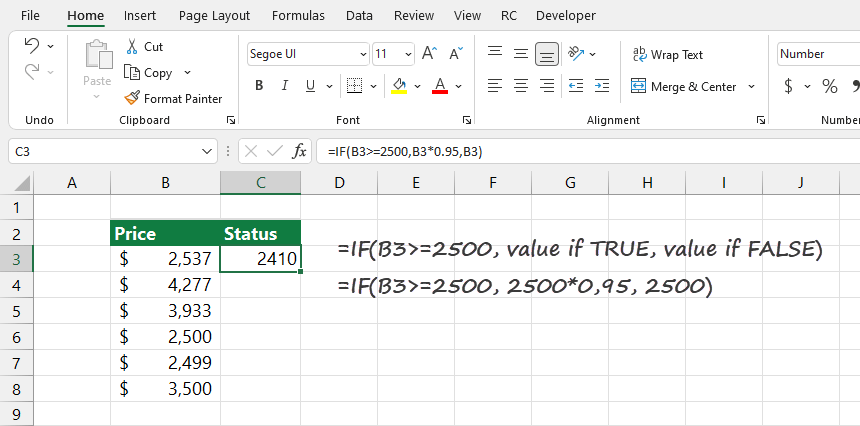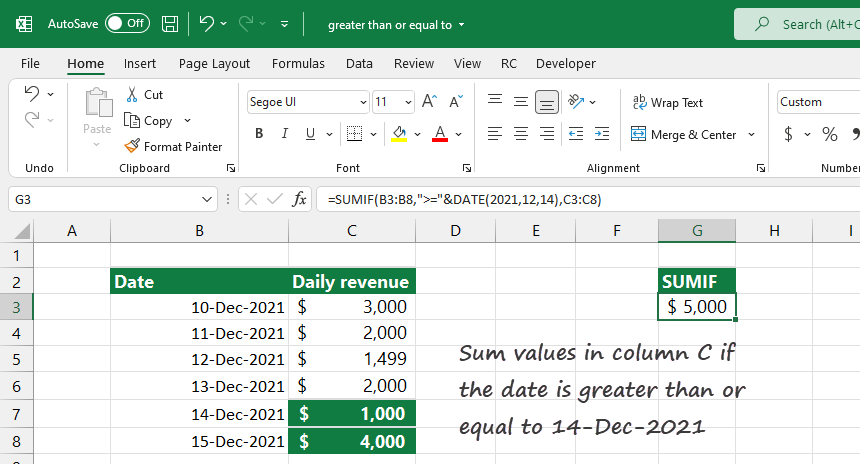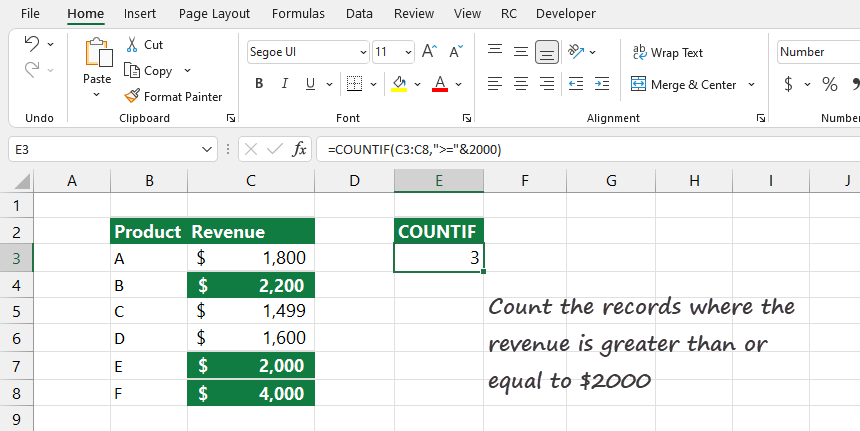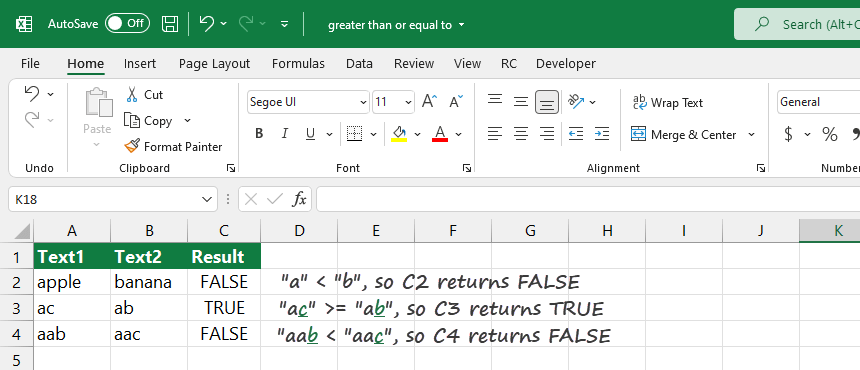Excel for Microsoft 365 Excel 2021 Excel 2019 Excel 2016 Excel 2013 Excel 2010 Excel 2007 More…Less
Operators specify the type of calculation that you want to perform on the elements of a formula. Excel follows general mathematical rules for calculations, which is Parentheses, Exponents, Multiplication and Division, and Addition and Subtraction, or the acronym PEMDAS (Please Excuse My Dear Aunt Sally). Using parentheses allows you to change that calculation order.
Types of operators. There are four different types of calculation operators: arithmetic, comparison, text concatenation, and reference.
-
Arithmetic operators
To perform basic mathematical operations, such as addition, subtraction, multiplication, or division; combine numbers; and produce numeric results, use the following arithmetic operators.
Arithmetic operator
Meaning
Example
+ (plus sign)
Addition
=3+3
– (minus sign)
Subtraction
Negation=3–3
=-3* (asterisk)
Multiplication
=3*3
/ (forward slash)
Division
=3/3
% (percent sign)
Percent
30%
^ (caret)
Exponentiation
=3^3
-
Comparison operators
You can compare two values with the following operators. When two values are compared by using these operators, the result is a logical value—either TRUE or FALSE.
Comparison operator
Meaning
Example
= (equal sign)
Equal to
=A1=B1
> (greater than sign)
Greater than
=A1>B1
< (less than sign)
Less than
=A1<B1
>= (greater than or equal to sign)
Greater than or equal to
=A1>=B1
<= (less than or equal to sign)
Less than or equal to
=A1<=B1
<> (not equal to sign)
Not equal to
=A1<>B1
-
Text concatenation operator
Use the ampersand (&) to concatenate (join) one or more text strings to produce a single piece of text.
Text operator
Meaning
Example
& (ampersand)
Connects, or concatenates, two values to produce one continuous text value
=»North»&»wind» results in «Northwind».
Where A1 holds «Last name» and B1 holds «First name», =A1&», «&B1 results in «Last name, First name». -
Reference operators
Combine ranges of cells for calculations with the following operators.
Reference operator
Meaning
Example
: (colon)
Range operator, which produces one reference to all the cells between two references, including the two references.
B5:B15
, (comma)
Union operator, which combines multiple references into one reference
=SUM(B5:B15,D5:D15)
(space)
Intersection operator, which produces one reference to cells common to the two references
B7:D7 C6:C8
Need more help?
Want more options?
Explore subscription benefits, browse training courses, learn how to secure your device, and more.
Communities help you ask and answer questions, give feedback, and hear from experts with rich knowledge.
The “greater than or equal to” is a comparison or logical operator that helps compare two data cells of the same data type. It is denoted by the symbol “>=” and returns the following values:
- “True,” if the first value is either greater than or equal to the second value
- “False,” if the first value is smaller than the second value
Generally, the “greater than or equal to” operator is used for date and time values and numbers. It can also be used for textual data.
For example, if cell C1 contains “rose” and cell D1 contains “lotus,” the formula “=C1>=D1” returns “true.” This is because the first letter “r” is greater than the letter “l.” The values “a” and “z” are considered the lowest and the highest text values respectively.
Table of contents
- The “Greater Than or Equal To” (>=) in Excel
- Logical and Arithmetic Operators
- How to Use “Greater Than” (>) and “Greater Than or Equal to” (>=)?
- Example #1–“Greater Than” and “Greater Than or Equal to”
- Example #2–“Greater Than or Equal to” With the IF Function
- Example #3–“Greater Than or Equal to” With the COUNTIF Function
- Example #4–“Greater Than or Equal to” With the SUMIF Function
- Frequently Asked Questions
- Recommended Articles
Logical and Arithmetic Operators
The “equal to” (=) symbol, used in mathematical operations, helps find whether two values are equal or not. Likewise, every logical operatorLogical operators in excel are also known as the comparison operators and they are used to compare two or more values, the return output given by these operators are either true or false, we get true value when the conditions match the criteria and false as a result when the conditions do not match the criteria.read more serves a particular purpose. Since logical operators return only the Boolean values “true” or “false,” they are also called Boolean operators.
The logical operators help draw relevant conclusions which are used in the decision-making process.
The arithmetic operators like “plus” (+), “minus” (-), “asterisk” (*), “forward slash” (/), “percent” (%), and “caret” (^) symbols are used in formulas. These operators are used in calculations to generate numeric output.
The “asterisk,” “forward slash,” and “caret” are used for multiplication, division, and exponentiation respectively.
How to Use “Greater Than” (>) and “Greater Than or Equal to” (>=)?
Let us consider a few examples to understand the usage of the given comparison operators in Excel.
You can download this Greater Than or Equal to Excel Template here – Greater Than or Equal to Excel Template
Example #1–“Greater Than” and “Greater Than or Equal to”
The following list shows five numerical values from cell A2 to A6. We want to test whether each number is greater than 50 or not.
The steps to test the greater number are listed as follows:
- Type the “equal to” (=) sign in cell B2.
- Select the cell A2 that is to be tested.
- Since we want to test whether the value in cell A2 is greater than 50 or not, type the comparison operator (>) followed by the number 50.
- Press the “Enter” key to obtain the result. Copy and paste or drag the formula to the remaining cells. The cells in yellow contain a number greater than 50. Hence, the result is “true”.
The value of cell A4 (50) is not greater than the number 50. Hence, the result in cell B4 is “false”.
To include 50 in the test, we need to change the comparison operator to “greater than or equal to” (>=).
The “greater than or equal to” operator returns the value “true” in cell B4. This implies that the value of cell A4 is either greater than or equal to 50.
Example #2–“Greater Than or Equal to” With the IF Function
Let us use the comparison operator “greater than or equal to” with the IF conditionIF function in Excel evaluates whether a given condition is met and returns a value depending on whether the result is “true” or “false”. It is a conditional function of Excel, which returns the result based on the fulfillment or non-fulfillment of the given criteria.
read more.
The following table shows the total sales (in dollars) of various months. The monthly incentives are calculated by comparing the sales against the benchmark of $6500. The possibilities are stated as follows:
- If the total sales>$6500, incentives are calculated at 10%.
- If the total sales<$6500, incentives are 0.
Step 1: Open the IF function. The IF function helps evaluate a criterion and returns “true” or “false” depending on whether the condition is met or not.
Step 2: Apply the logical testA logical test in Excel results in an analytical output, either true or false. The equals to operator, “=,” is the most commonly used logical test.read more, B2>6500.
Step 3: The condition is that if the logical test is “true,” we calculate the incentives as B2*10%. So, we type this criterion.
Step 4: If the logical test is “false,” the incentives are 0. So, we type zero at the end of the formula.
In cell C2, the formula returns the output 0. This implies that the value in cell B2 is less than $6500.
Step 5: Drag the formula to the remaining cells, as shown in the following image.
Since the values in the cells B5, B11, B12, and B13 are greater than $6500, we get the respective incentive amounts in column C.
Example #3–“Greater Than or Equal to” With the COUNTIF Function
Let us use the comparison operator “greater than or equal to” with the COUNTIFThe COUNTIF function in Excel counts the number of cells within a range based on pre-defined criteria. It is used to count cells that include dates, numbers, or text. For example, COUNTIF(A1:A10,”Trump”) will count the number of cells within the range A1:A10 that contain the text “Trump”
read more function.
The following table shows the date and amount of the invoices sent to the buyer. We want to count the number of invoices that are sent on or after 14th March 2019.
Step 1: Open the COUNTIF function. The COUNTIF function helps count the cells within a particular range based on a criterion.
Step 2: Select the date column (column A) as the range (A2:A13).
Step 3: Since the criterion is on or after 14th March 2019, it can be represented as “>=14-03-2019.” Type the symbol “>=” in double quotation marks.
Note: The comparison operators in the “criteria” argument must be placed within double quotation marks.
Step 4: Type the ampersand sign (&). We supply the date with the DATE functionThe date function in excel is a date and time function representing the number provided as arguments in a date and time code. The result displayed is in date format, but the arguments are supplied as integers.read more. This is because we are not using the cell referencesCell reference in excel is referring the other cells to a cell to use its values or properties. For instance, if we have data in cell A2 and want to use that in cell A1, use =A2 in cell A1, and this will copy the A2 value in A1.read more of date values.
Step 5: Close the brackets of the formula and press the “Enter” key.
The output is 7, implying that a total of seven invoices are generated on or after 14th March 2019.
Example #4–“Greater Than or Equal to” With the SUMIF Function
Let us use the comparison operator “greater than or equal to” with the SUMIFThe SUMIF Excel function calculates the sum of a range of cells based on given criteria. The criteria can include dates, numbers, and text. For example, the formula “=SUMIF(B1:B5, “<=12”)” adds the values in the cell range B1:B5, which are less than or equal to 12.
read more function.
The following table shows the monthly sales of an organization. The sales figures are reported in thousand dollars. We want to find whether the total sales are greater than or equal to $20,000.
Step 1: Open the SUMIF function. The SUMIF function sums the cells based on a specified criterion.
Step 2: Select the sales column (column B) as the “range” ($B$2:$B$13). This helps sum the monthly sales values.
Step 3: Type the “criteria” as “>=”&20. Place the comparison operator within the double quotation marks.
Step 4: Select the “sum_range” same as the “range” argument, i.e., $B$2:$B$13.
The output is $132,000. Hence the total sales are greater than $20,000.
Frequently Asked Questions
Define the “greater than or equal to” operator in Excel.
The “greater than or equal to” (>=) is one of the six comparison or logical operators of Excel. It returns “true” if the first number is greater than or equal to the second number; otherwise returns “false”.
The remaining comparison operators are “equal to” (=), “not equal to” (<>), “greater than” (>), “less than” (<), and “less than or equal to” (<=). All the comparison operators help compare two data cells. They can be used with numbers, text, and date and time values.
For example, the formula “=C2>=SUM(F2:H11)” returns “true” if the value in cell C2 is greater than or equal to the sum of values in the range F2:H11. If the converse is correct, it returns “false”.
When should the “greater than or equal to” operator be used in Excel?
The given comparison operator should be used in the following situations:
• To find which of the two quantities is greater or smaller
• To find whether one quantity is equal to the other
• To evaluate two quantities with respect to a given criteria
• To compare two separate quantities with a third quantity
Note: Two quantities can be compared only if both are of the same data type.
How is the “greater than or equal to” symbol written in Excel?
The “greater than or equal to” symbol (>=) is written in Excel by typing the “greater than” (>) sign followed by the “equal to” (=) operator.
The operator “>=” is placed between two numbers or cell references to be compared. For example, type the formula as “=A1>=A2” in Excel.
The symbol “>=” is placed within double quotation marks when entered in the “criteria” argument of SUMIF and COUNTIF functions. For example, type the formula as “=SUMIF(B2:B11,”>=100″)” in Excel.
Note: The two formulas of Excel (in the preceding examples) should be entered excluding spaces and without the beginning and ending quotation marks.
Recommended Articles
This has been a guide to “greater than or equal to” in Excel. Here we discuss how to use “greater than” and “greater than or equal to” (>=) with IF, SUMIF, and COUNTIF formulas along with examples and downloadable Excel templates. You may also look at these useful functions in Excel –
- “Not Equal” in VBA
- Excel Formula for COUNTIF
- Not Equal to in Excel
- List of Excel Functions
Содержание
- Greater Than or Equal to in Excel
- How to use the “Greater Than or Equal To” operator in Excel
- Example 1. – “Greater Than” and “Greater Than or Equal to”
- Example 2. – Using the IF formula and “Greater Than or Equal to”
- Example 3: Use the SUMIF function if the date is “greater than equal to”
- Example 4: COUNTIF function and logical operators
- Example 5: Working with Text values
- Wrapping things up
- Ultimate Dashboard Tools
- Calculation operators and precedence in Excel
- Types of operators
- The order in which Excel performs operations in formulas
- How Excel converts values in formulas
- Need more help?
- “Greater Than or Equal to” (>=) in Excel
- The “Greater Than or Equal To” (>=) in Excel
- Logical and Arithmetic Operators
- How to Use “Greater Than” (>) and “Greater Than or Equal to” (>=)?
- Example #1–“Greater Than” and “Greater Than or Equal to”
- Example #2–“Greater Than or Equal to” With the IF Function
- Example #3–“Greater Than or Equal to” With the COUNTIF Function
- Example #4–“Greater Than or Equal to” With the SUMIF Function
- Frequently Asked Questions
- Recommended Articles
Greater Than or Equal to in Excel
In Excel, the greater than or equal to (>=) logical operator compares two cells that contain the same data types.
The greater than equal to operator uses the “>=” symbol and returns the TRUE or FALSE value. We frequently use this operator if we are working with formulas.
Today’s tutorial is a part of our definitive guide on Excel Formulas.
Example:
- If value1 is greater than equal to value2, the result is TRUE
- If value1 is less than value2, the result is FALSE.
You can use the “greater than or equal to” operator to compare various data types. These are:
Logical operators return boolean type values: TRUE or FALSE, so by checking these outputs, you can decide easily.
How to use the “Greater Than or Equal To” operator in Excel
The following examples help you to understand better how to use these operators for comparison purposes in Excel.
Example 1. – “Greater Than” and “Greater Than or Equal to”
Our data set uses the range B3:B8, which contains numerical values. The comparison is simple. Test whether the given value is greater than 150 or not! So, in cell E3, you can find the criteria.
Typannd equal sign in the formula bar and enter the formula: =B3>= $E$3. Because cell E3 is a constant, you should use absolute reference. Copy the formula down:
Let us see another example: change the operator to greater than equal to (>= ) and re-evaluate the formula:
Using the greater than or equal to operator returns TRUE in cell C5. Because the test contains an equal operator, the comparison result is TRUE.
Example 2. – Using the IF formula and “Greater Than or Equal to”
Let us combine the “greater than or equal to” comparison operator with the IF function in the example.
Example: In column B, you can find the prices. The logical test works based on these conditions: If the price is >= 2500, the price will reduce by 5%. If the price is =2500, B3*0.95, B3)
- Locate the formula bar and typannd equal sign (=)
- Enter the IF function and open a bracket
- The first argument of the function is the logical test. In this case, B3 is greater than equal to (>=) 2500.
- Type a comma and enter the second argument, B3 * 0,95
- In cell B3, if the logical test is TRUE, the formula applies a price reduction of 5%.
- Type a comma, and add the third argument; what will happen, if the value is less than 2500
- The formula will keep the original price untouched if the test is FALSE.
- Close the bracket and press Enter
Copy the formula down:
In cell B7, the value is $2499, so the result is FALSE based on the logical test. However, the value in cell C7 remains the original. Therefore, the “greater than or equal to” condition is TRUE in all other cases.
Example 3: Use the SUMIF function if the date is “greater than equal to”
In Excel, working with dates and logical operators is not rocket science.
In this example, our table contains order dates and the daily revenue. You want to summarize the revenue if the order date is greater than or equal to December 14, 2021.
Enter the formula =SUMIF(B3:B8,”>=”&DATE(2021,12,14),C3:C8)
- Locate the formula bar and typannd equal sign (=)
- Enter the SUMIF function and open a bracket
- The function’s first argument is the range, where we find the date. In this case, we will test the dates in column B, greater than or equal to December 14, 2021.
- Type a comma and enter the criteria, “>=” &DATE(2021,12,14)
- Type a comma, and add the third argument; the sum_range, in this case, range C3:C8
- Close the bracket and press Enter
Example 4: COUNTIF function and logical operators
In the example, you want to count the records in column C, where the revenue is greater than or equal to $2000.
- Locate the formula bar and type an equal sign (=)
- Enter the COUNTIF function and open a bracket
- The first argument is the range, where we find the value that will compare to the criteria.
- Type a comma and enter the criteria, “>=” &2000
- Close the bracket and press Enter
Copy the formula down and check the result. The result is =3 because only three values are greater than or equal to 2000.
Example 5: Working with Text values
It is not a great idea to use the “greater than or equal to” operator for text values if you are working with Excel.
In the example, cell A1 contains “apple” and the text in cell B1 is “banana.” Type the A1>= B1 formula.
The result is FALSE. It would be great to know why. Excel uses a simple algorithm (alphabetic order of characters) to decide which text is “greater than equal to.” The minimum value is “a,” and the maximum is “z.”
Here are some text-related comparison examples:
What if both texts begin with the same characters? Excel checks the second character, and so on. We’ve just demonstrated that using the “greater than or equal to” operator is not the best comparison method.
Wrapping things up
The operator (>=) returns TRUE if the first value is greater than or equal to the second value. If not, Excel returns FALSE. For example, the formula =A1>=COUNT(B2:B10) gets TRUE if the value in cell A1 is greater than or equal to the count of values in the range B2:B10. Conversely, if the value in cell A1 is less than the criteria, it returns FALSE.
Possible actions:
– Compare two values.
– Find the value in a range that is equal to the criteria.
– Finally, test a number that is met the given criteria or does not.
No. It is not recommended.
Download the example
That was our quick guide on how the “greater than or equal to” operator works. If you want to practice, download the examples and look at the used formulas and functions.
Istvan is the co-founder of Visual Analytics Ltd. He writes blog posts and helps people to reach the top in Excel.
Ultimate Dashboard Tools
Pro Dashboard Add-in for Excel. Fully automated. Lightweight. No coding skills required.
Источник
Calculation operators and precedence in Excel
Operators specify the type of calculation that you want to perform on elements in a formula—such as addition, subtraction, multiplication, or division. In this article, you’ll learn the default order in which operators act upon the elements in a calculation. You’ll also learn that how to change this order by using parentheses.
Types of operators
There are four different types of calculation operators: arithmetic, comparison, text concatenation, and reference.
To perform basic mathematical operations such as addition, subtraction, or multiplication—or to combine numbers—and produce numeric results, use the arithmetic operators in this table.
With the operators in the table below, you can compare two values. When two values are compared by using these operators, the result is a logical value either TRUE or FALSE.
> (greater than sign)
= (greater than or equal to sign)
Greater than or equal to
(not equal to sign)
Use the ampersand (&) to join, or concatenate, one or more text strings to produce a single piece of text.
Connects, or concatenates, two values to produce one continuous text value.
Combine ranges of cells for calculations with these operators.
Range operator, which produces one reference to all the cells between two references, including the two references.
Union operator, which combines multiple references into one reference.
Intersection operator, which produces a reference to cells common to the two references.
The # symbol is used in several contexts:
Used as part of an error name.
Used to indicate insufficient space to render. In most cases, you can widen the column until the contents display properly.
Spilled range operator, which is used to reference an entire range in a dynamic array formula.
Reference operator, which is used to indicate implicit intersection in a formula.
The order in which Excel performs operations in formulas
In some cases, the order in which calculation is performed can affect the return value of the formula, so it’s important to understand the order— and how you can change the order to obtain the results you expect to see.
Formulas calculate values in a specific order. A formula in Excel always begins with an equal sign (=). The equal sign tells Excel that the characters that follow constitute a formula. After this equal sign, there can be a series of elements to be calculated (the operands), which are separated by calculation operators. Excel calculates the formula from left to right, according to a specific order for each operator in the formula.
If you combine several operators in a single formula, Excel performs the operations in the order shown in the following table. If a formula contains operators with the same precedence — for example, if a formula contains both a multiplication and division operator — Excel evaluates the operators from left to right.
Negation (as in –1)
Multiplication and division
Addition and subtraction
Connects two strings of text (concatenation)
To change the order of evaluation, enclose in parentheses the part of the formula to be calculated first. For example, the following formula results in the value of 11, because Excel calculates multiplication before addition. The formula first multiplies 2 by 3, and then adds 5 to the result.
By contrast, if you use parentheses to change the syntax, Excel adds 5 and 2 together and then multiplies the result by 3 to produce 21.
In the example below, the parentheses that enclose the first part of the formula will force Excel to calculate B4+25 first, and then divide the result by the sum of the values in cells D5, E5, and F5.
Watch this video on Operator order in Excel to learn more.
How Excel converts values in formulas
When you enter a formula, Excel expects specific types of values for each operator. If you enter a different kind of value than is expected, Excel may convert the value.
When you use a plus sign (+), Excel expects numbers in the formula. Even though the quotation marks mean that «1» and «2» are text values, Excel automatically converts the text values to numbers.
When a formula expects a number, Excel converts text if it is in a format that would usually be accepted for a number.
Excel interprets the text as a date in the mm/dd/yyyy format, converts the dates to serial numbers, and then calculates the difference between them.
Excel cannot convert the text to a number because the text «8+1» cannot be converted to a number. You can use «9» or «8»+»1″ instead of «8+1» to convert the text to a number and return the result of 3.
When text is expected, Excel converts numbers and logical values such as TRUE and FALSE to text.
Need more help?
You can always ask an expert in the Excel Tech Community or get support in the Answers community.
Источник
“Greater Than or Equal to” (>=) in Excel
The “Greater Than or Equal To” (>=) in Excel
The “greater than or equal to” is a comparison or logical operator that helps compare two data cells of the same data type. It is denoted by the symbol “>=” and returns the following values:
- “True,” if the first value is either greater than or equal to the second value
- “False,” if the first value is smaller than the second value
Generally, the “greater than or equal to” operator is used for date and time values and numbers. It can also be used for textual data.
For example, if cell C1 contains “rose” and cell D1 contains “lotus,” the formula “=C1>=D1” returns “true.” This is because the first letter “r” is greater than the letter “l.” The values “a” and “z” are considered the lowest and the highest text values respectively.
Table of contents
Logical and Arithmetic Operators
The logical operators help draw relevant conclusions which are used in the decision-making process.
The arithmetic operators like “plus” (+), “minus” (-), “asterisk” (*), “forward slash” (/), “percent” (%), and “caret” (^) symbols are used in formulas. These operators are used in calculations to generate numeric output.
The “asterisk,” “forward slash,” and “caret” are used for multiplication, division, and exponentiation respectively.
How to Use “Greater Than” (>) and “Greater Than or Equal to” (>=)?
Let us consider a few examples to understand the usage of the given comparison operators in Excel.
Example #1–“Greater Than” and “Greater Than or Equal to”
The following list shows five numerical values from cell A2 to A6. We want to test whether each number is greater than 50 or not.
The steps to test the greater number are listed as follows:
- Type the “equal to” (=) sign in cell B2.
Select the cell A2 that is to be tested.
Since we want to test whether the value in cell A2 is greater than 50 or not, type the comparison operator (>) followed by the number 50.
Press the “Enter” key to obtain the result. Copy and paste or drag the formula to the remaining cells. The cells in yellow contain a number greater than 50. Hence, the result is “true”.
The value of cell A4 (50) is not greater than the number 50. Hence, the result in cell B4 is “false”.
To include 50 in the test, we need to change the comparison operator to “greater than or equal to” (>=).
The “greater than or equal to” operator returns the value “true” in cell B4. This implies that the value of cell A4 is either greater than or equal to 50.
Example #2–“Greater Than or Equal to” With the IF Function
The following table shows the total sales (in dollars) of various months. The monthly incentives are calculated by comparing the sales against the benchmark of $6500. The possibilities are stated as follows:
- If the total sales>$6500, incentives are calculated at 10%.
- If the total sales
Step 1: Open the IF function. The IF function helps evaluate a criterion and returns “true” or “false” depending on whether the condition is met or not.
Step 3: The condition is that if the logical test is “true,” we calculate the incentives as B2*10%. So, we type this criterion.
Step 4: If the logical test is “false,” the incentives are 0. So, we type zero at the end of the formula.
In cell C2, the formula returns the output 0. This implies that the value in cell B2 is less than $6500.
Step 5: Drag the formula to the remaining cells, as shown in the following image.
Since the values in the cells B5, B11, B12, and B13 are greater than $6500, we get the respective incentive amounts in column C.
Example #3–“Greater Than or Equal to” With the COUNTIF Function
The following table shows the date and amount of the invoices sent to the buyer. We want to count the number of invoices that are sent on or after 14 th March 2019.
Step 1: Open the COUNTIF function. The COUNTIF function helps count the cells within a particular range based on a criterion.
Step 2: Select the date column (column A) as the range (A2:A13).
Step 3: Since the criterion is on or after 14 th March 2019, it can be represented as “>=14-03-2019.” Type the symbol “>=” in double quotation marks.
Note: The comparison operators in the “criteria” argument must be placed within double quotation marks.
Step 5: Close the brackets of the formula and press the “Enter” key.
The output is 7, implying that a total of seven invoices are generated on or after 14 th March 2019.
Example #4–“Greater Than or Equal to” With the SUMIF Function
The following table shows the monthly sales of an organization. The sales figures are reported in thousand dollars. We want to find whether the total sales are greater than or equal to $20,000.
Step 1: Open the SUMIF function. The SUMIF function sums the cells based on a specified criterion.
Step 2: Select the sales column (column B) as the “range” ($B$2:$B$13). This helps sum the monthly sales values.
Step 3: Type the “criteria” as “>=”&20. Place the comparison operator within the double quotation marks.
Step 4: Select the “sum_range” same as the “range” argument, i.e., $B$2:$B$13.
The output is $132,000. Hence the total sales are greater than $20,000.
Frequently Asked Questions
The “greater than or equal to” (>=) is one of the six comparison or logical operators of Excel. It returns “true” if the first number is greater than or equal to the second number; otherwise returns “false”.
The remaining comparison operators are “equal to” (=), “not equal to” (<>), “greater than” (>), “less than” ( =SUM(F2:H11)” returns “true” if the value in cell C2 is greater than or equal to the sum of values in the range F2:H11. If the converse is correct, it returns “false”.
The given comparison operator should be used in the following situations:
• To find which of the two quantities is greater or smaller
• To find whether one quantity is equal to the other
• To evaluate two quantities with respect to a given criteria
• To compare two separate quantities with a third quantity
Note: Two quantities can be compared only if both are of the same data type.
The “greater than or equal to” symbol (>=) is written in Excel by typing the “greater than” (>) sign followed by the “equal to” (=) operator.
The operator “>=” is placed between two numbers or cell references to be compared. For example, type the formula as “=A1>=A2” in Excel.
The symbol “>=” is placed within double quotation marks when entered in the “criteria” argument of SUMIF and COUNTIF functions. For example, type the formula as “=SUMIF(B2:B11,”>=100″)” in Excel.
Note: The two formulas of Excel (in the preceding examples) should be entered excluding spaces and without the beginning and ending quotation marks.
Recommended Articles
This has been a guide to “greater than or equal to” in Excel. Here we discuss how to use “greater than” and “greater than or equal to” (>=) with IF, SUMIF, and COUNTIF formulas along with examples and downloadable Excel templates. You may also look at these useful functions in Excel –
Источник
Logical Operators in Excel: Less Than, Greater Than (+More!)
We all have read about logical operators in high school – even if we didn’t like them then.
Similar to those, Excel provides comparison operators that return the result in TRUE or FALSE.
These operators are like “less than or equal to” and “greater than or equal to” which are very helpful in quick data analysis.
In this guide, we will discuss all the aspects of logical operators and see how to use them. So stay tuned! 🤗
Also, if you want to practice along the guide, you can get our free sample workbook here.
What are logical operators in Excel?
Logical operators are also known as comparison operators because their primary purpose is to compare two values.
These operators always only consider the value. And that’s regardless of how it is derived – even if it’s from a formula.
Also, a logical operator never returns numerical values in the result, only TRUE and FALSE. The value of TRUE and FALSE is 1 and 0, respectively – which are binary digits.
The comparison operators can also handle any Boolean expression. Hence, they are called Boolean operators.
In Excel, there are six Boolean operators you can use. These are:
- Less than
- Less than or equal to
- Greater than
- Greater than or equal to
- Equal to
- Not Equal to
Let’s study all these operators in depth below 🚀
Less than in Excel
As evident from the name, the ‘Less than’ operator checks if the first value is less than the second value or not. If it is, it returns TRUE; otherwise, it returns FALSE, and it is denoted by <.
Let’s understand its concept using an example.
We have the following data set.

We want to check if cell A2 is less than cell B2. For that:
- Select cell C2.
- Type in the formula
=A2<B2

- Press Enter.
Excel shows the result as follows:

To do the same for all other entries, simply double-click the Fill Handle as:

Pro Tip!
Excel can also compare text values, but by their alphabetical order. It compares the first letters of both values. And determines which of the two falls lower in the order.
However, if both the first values are the same, the operator moves on to the second one, and so forth 😀
Less than or equal to in Excel
The ‘Less than or equal to’ operator is the same as the ‘Less than’ operator. The only difference is that it returns TRUE if the first value is smaller or equal to the second value. It is represented by <=
Let’s see it working through a quick example.
We have identical values in the first two cells below.

If we apply the formula:
=A2<=B2
Excel would return the result TRUE.

Similarly, if we reduce the value of cell A2, it would still show TRUE as:

That’s because the condition is to return TRUE if the first value is less than or equal to the second value. Since the value, in this case, is lesser, Excel returns TRUE. Otherwise, it would return FALSE.
Less than or equal to’ example with the IF function
You can also combine logical operators with Excel functions.
Let’s see an example using the IF function with the ‘Less than or equal to’ operator below.
Suppose, we have the following data set.

We want to check if the first value in A2 is less than or equal to the value in cell B2 or not. If it is, the IF function will return ‘Right,’ and if it is not, it will return ‘Wrong.’
So, for this, we will enter the formula:
=IF (A1<=B1, “Right,” “Wrong”)


The IF function returns “Right” because the values in cells A2 and B2 are equal.
Double Click the Fill Handle to copy the formula to the remaining entries.

Excel returns “Right” for all the values that fulfill the condition, i.e., are less than or equal to the second value. And for the ones that don’t fulfill the condition, Excel returns “Wrong.”
Greater than in Excel
The ‘Greater than’ logical operator checks if the first value is greater than the second. It’s the opposite of the ‘Less than’ operator and is denoted by >.
Let’s see it using an example 👀
We have the following data.

We want to check if the value in cell A2 is greater than the value in cell B2. For that:
- Select C2.
- Enter the formula
=A2>B2

- Hit Enter.

The result TRUE shows that cell A2 is greater than cell B2.
Drag down the Fill Handle to copy the formula.

Pro Tip!
For text values, the ‘Greater than’ operator begins the count from the bottom of the English alphabet – Z.
‘Greater than’ example with the SUMIF Function
Let’s see how to use the ‘Greater than’ operator with the SUMIF function below.
We have the following sample data.

To use the SUMIF function, we will apply the formula:
=SUMIF(A2:A7, “>”&B2, B2:B7)

Note that we have used the “&” ampersand after the logical operator. This is because our target value was in another cell, so we used the cell reference and joined it with the condition.
Comment
Make sure to enclose the logical operators in double quotation marks as we did above. Otherwise, they are considered to be text strings.
Press Enter and Excel returns the result:

And tada! It’s done. That’s how easy it is to use the SUMIF function with the ‘Greater than’ operator 😉
Greater than or equal to in Excel
As the name suggests, the ‘Greater than or equal’ sign tells if a value is greater than or equal to its counterpart. If it is, the operator returns TRUE otherwise, it returns FALSE. The ‘Greater than or equal’ operator is denoted by ≥.
Let’s see how it works through an example below.
We have the following example data.
If we apply the ‘Greater than or equal to’ operator on cells A2 and B2 as:
=A2>=B2

Excel returns TRUE as both the values are equal to each other.

Similarly, if we increase the value of cell A2 by 1, the result will remain the same.

That’s because the condition given is to check if the value in the first cell is greater than the value in the second cell or equal to it.
Not equal to in Excel
The ‘Not equal to’ operator is self-explanatory!
But the symbol is not🤔
It is denoted <>, and it returns FALSE if two values are equal to each other; otherwise, it returns TRUE. It is the opposite of the ‘Equal to’ operator.
Let’s see it in action through an example.
This is our sample data.

We will apply the ‘Not equal to’ operator to cells A2 and B2 as:
=A2<>B2

Excel returns FALSE as a result:

Here Excel returned FALSE because both the cell values were the same. And the ‘Not equal to’ operator returns FALSE for identical values.
To copy the same formula down the rows, double-click the Fill Handle.

Excel copied the formula to the remaining rows 😊
That’s it – Now what?
And tada! You now know everything about Excel logical operators 🥳
We learned so much about them in this article. We saw how the ‘Less than’ and ‘Greater than’ operators work. We also learned how to use them with text values and interpret the answer.
All this knowledge takes us one step closer to Excel mastery. But it doesn’t end here. This giant spreadsheet has tons of other things to offer.
If you want to polish your Excel skills, we recommend you master the VLOOKUP, IF, and SUMIF functions.
You learn those in my 30-minute free course delivered straight to your inbox. So enroll now and learn these fantastic functions!
Other resources
Boolean operators are very useful when you need quick results for extensive data. And even more useful when combined with Excel functions like COUNTIF function and SUMIF function, etc.
If you enjoyed reading this article, we bet you’d want to learn more. Some related topics include the IF, TRUE & FALSE, and Excel Logical Functions.
Frequently asked questions
It’s simple. You can use the ‘Less than or equal to’ operator in formulas like =A3<= SUM(C2:C6). Excel will return the result TRUE if the value in A3 is less than or equal to the result of SUM; otherwise FALSE.
Yes, you can. The >= operator symbolizes the ‘Greater than or equal’ condition. It returns TRUE if a certain value is greater than or equal to its counterpart and vice versa.
Excel lets you use logical operators with multiple Excel functions. The IF function is most common for combining with comparison operators. An example could be =IF (A1>=B1, “Pass,” “Fail”). This tells the function to return Pass if the condition is TRUE; otherwise, Fail.
Kasper Langmann2023-01-04T18:52:07+00:00
Page load link
Logical operators such as Excel greater than or equal to within Excel can be used to compare two data values. There are six logical operators within Excel.
- Greater Than (>)
- Less Than (<)
- Greater Than or Equal To (>=)
- Less Than or Equal To (<=)
- Equal To (=)
- Not Equal To (<>)
Each of the six Excel logical operators returns either a TRUE or FALSE outcome and as such, they are often referred to as Boolean Operators. The logical operators can be used to compare text, numerical, date, and/or time values; they can also be used within other logical formulas.
How Can We Use Excel Logical Operators With Numerical Data
The most common use for logical operators is to compare numerical values. The spreadsheet below depicts the six different logical operators as they relate to a series of numbers.
Column C: Using the Greater Than (>) logical operator to compare the numbers in Columns A and B. TRUE means that the number in Column B is in fact greater than the number in Column A for that row.
Column D: Using the Less Than (<) logical operator to compare yields a TRUE if the number in Column B is less than the number in Column A for that row.
Column E: Using the Greater Than or Equal To the logical operator, Examine Row 6 wherein Column C a FALSE was generated. By adding the Equal To logical operator in Column E the result is now TRUE as it is also TRUE in Column F.
Column F: Using the Less Than or Equal To logical operator.
Column G: Using the Equal To Operator. This will only yield a TRUE if both numbers are identical.
Column H: Using the NOT Equal To logical operator generates a TRUE every time the numbers in Column A and B do not equal each other.
How Are Date Values Used With Excel’s Greater Than or Equal to Operators?
What are the uses of excel greater than or equal to? When using Excel greater than or equal to operators to compare two dates you follow the same method as with numerical data. The spreadsheet below illustrates the six logical operators comparing two dates.
If errors arise, try embedding the logical operator into a DATEVALUE function. Example: = DATEVALUE (“02/01/17”) > DATEVALUE (“01/01/17”). Another tip is to make sure the columns are formatted as a DATE.
What Are the Uses of Excel Greater Than or Equal To, Can We Use Logical Operators with Excel’s Text Functions?
As we teach in our Excel lessons, logical operators can be used to compare text. The way Excel compares two text values is by starting with the first letter of each value. If they are the same, it moves to the second letter in the value.
Basically, it works in alphabetical order where Z is a higher value than A. The logical operators do not, however, check for case sensitivity. In the spreadsheet below, rows 6 and 7 yields the same results even though Cell B7 has “pens” instead of “Pens”.
Use Logical Operators in Other Formulas
Logical operators can be used in conjunction with other formulas to first compare the values and then generate a logical conclusion. The most common use is within an IF statement.
For example, instead of showing a TRUE or FALSE response, we wanted a YES or NO response. Take the original logical operator function and place it within an IF statement:
= IF ((B2>A2), ”YES”, ”NO”)
This function reads, If the value in cell B2 is Greater Than the value in cell A2, show a YES, if not show a NO. The spreadsheet below illustrates the six logical operators as embed within an IF statement.
The Excel greater than or equal to logical operators can be used within many other Excel functions and can be highly useful to quickly compare two sets of data.

